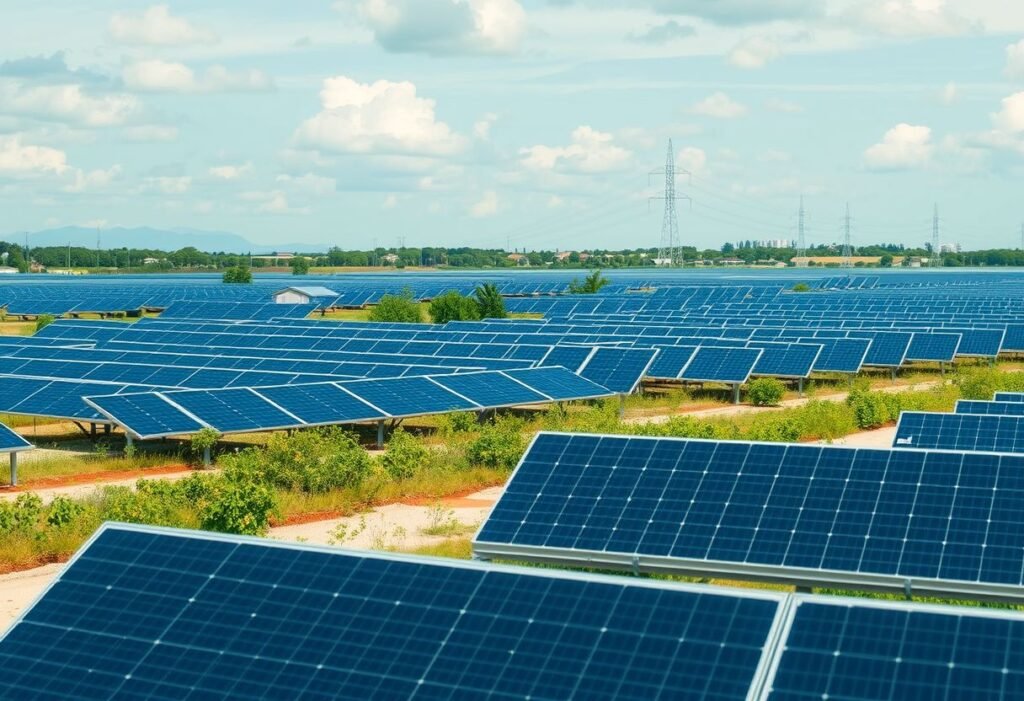Solar farms have emerged as a significant player in the realm of renewable energy, affecting local economies and fostering innovation. Their proliferation not only promotes eco-friendly energy solutions but also catalyzes economic growth and job creation in numerous regions.
Boosting Local Employment Opportunities
The establishment of solar farms generates a wide array of job opportunities, from skilled solar technicians to project managers. According to the Solar Energy Industries Association, the solar industry employed more than 250,000 people in the United States alone as of 2020. With jobs ranging from manufacturing solar panels to installation, local economies see a substantial drop in unemployment rates, which promotes economic stability and fosters community growth. Moreover, training programs related to renewable energy technologies enhance the skill set of the local workforce, preparing them for future innovations and industry demands.
Attracting Investment in Renewable Energy
Solar farms are not just great for the environment—they are also excellent catalysts for attracting investment. The increasing shift toward sustainable energy solutions has made regions with solar farms more attractive to investors, leading to an influx of capital for local businesses. This trend results in increased funding for infrastructure improvements and local development projects, enhancing overall community well-being. Studies show that areas with established solar energy projects often experience an upsurge in real estate values and local services, creating a win-win scenario for both investors and the community.
Encouraging Sustainable Business Practices
Local businesses are also influenced by the presence of solar farms as they transition toward sustainable practices. The rise in solar energy adoption encourages companies to adopt green technologies in their operational processes. This not only reduces their carbon footprint but can also lead to cost savings in energy expenditures. As more businesses embrace sustainability, the collective effort results in a significant positive effect on the local ecosystem, promoting a green economy rooted in innovation and responsibility.
Supporting Local Infrastructure Development
Solar farms often lead to improvements in local infrastructure, including roads and utilities, which are necessary for the transportation of materials and maintenance of the farms. As local governments recognize the benefits of these solar installations, they may invest in enhancing infrastructure to support them, which consequently benefits residents. Enhanced infrastructure not only improves local commuting but can also pave the way for future investment in other renewable energy projects. This chain reaction boosts economic prospects, making areas more viable for further development.
Fostering Community Engagement and Awareness
The operation of solar farms also fosters community engagement around sustainability. Local organizations often extend awareness programs that educate residents on the benefits of renewable energy. Increasing public knowledge results in greater community support for similar initiatives, establishing a culture of acceptance and enthusiasm towards innovation. Furthermore, engaging the community creates opportunities for local stakeholders to part-take in decision-making processes related to energy projects, fostering a strong sense of ownership and responsibility within the populace.
Promoting Long-Term Economic Resilience
The long-term implications of having solar farms in local economies include increased resilience against economic downturns. Renewable energy projects provide stable job opportunities, thereby ensuring consistent income for families. With the movement towards energy independence, communities with an established presence in solar energy can better withstand fluctuating energy prices and market uncertainties. This multifaceted approach to economic resilience is essential as they continue to innovate and adapt to future changes in the energy landscape.
Disclaimer: The information provided in this article is for informational purposes only and is not a substitute for professional advice.





















